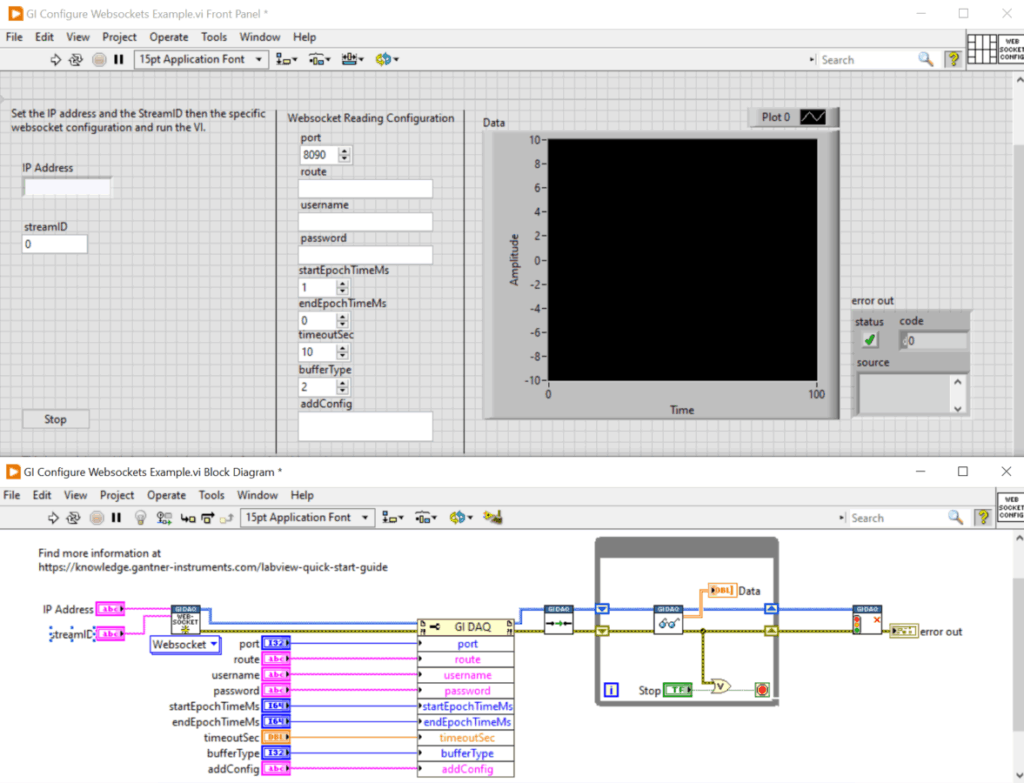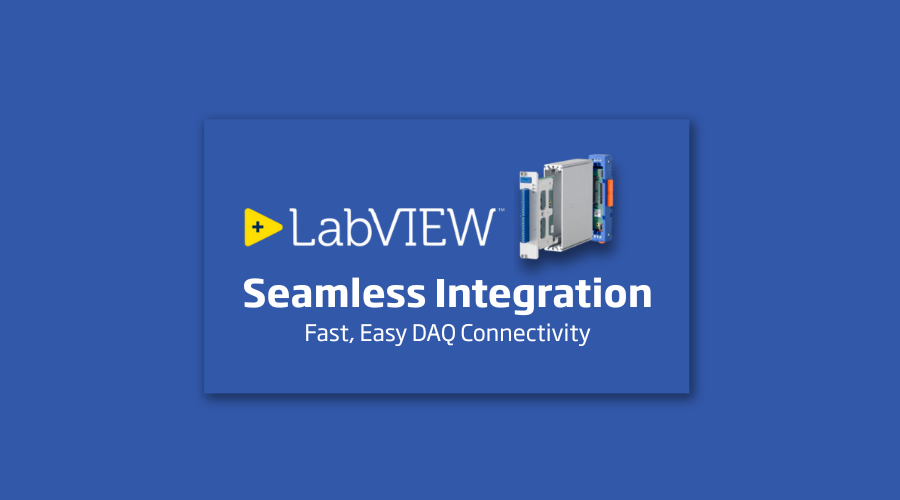Introducing GI DAQ Library v2.5
The new GI DAQ Library v2.5 replaces the previous VI package with a fully refactored, object-oriented architecture that delivers faster integration, cleaner design, and future-ready flexibility. Built to NI LabVIEW style guidelines, the library enables you to read and write to Gantner DAQ hardware with just a few clicks, eliminating the need for manual protocol handling or custom driver development.
Whether you’re building a quick test rig or scaling up to a full automation suite, the new library gives you direct access to all Q.controller-based DAQ systems using a single unified interface.

What’s New in V2.5?
The updated library makes setup and integration as easy as possible:
- Direct support for buffered and real-time data access, with WebSocket integration.
- Read from instrument buffers, post-process buffers, or decode UDBF files.
- Write values online during test execution.
- Install directly via .vip package with no extra dependencies or DLL juggling.
- Compatible with LabVIEW 2017 and later, in both 32-bit and 64-bit versions.
- Built-in example VIs, demo projects, and a template application to get started in minutes.

Simpler Setup, Smarter Workflow
With the GI DAQ Library v2.5, everything you need is in one place. You no longer need to manage multiple drivers or cobble together partial integrations. The library is self-contained, adheres to NI conventions, and includes comprehensive documentation for use with any Q.controller family product.
Whether you want to:
- Integrate live data streaming into LabVIEW for real-time dashboards
- Log synchronized temperature, current, and strain values into a structured file
- Create custom HIL or endurance testing routines using LabVIEW logic
The GI DAQ Library gives you the building blocks to do it faster and more reliably.
Built for Engineers, Not Just for Developers
Gantner’s new VI structure is not only easier to use, it’s engineered for precision. The architecture ensures minimal latency, maximum reliability, and high-quality signal fidelity across complex test setups. That means better data, less code, and a workflow you can trust.
Why Gantner Instruments + LabVIEW?
- Fast and accurate access to all Gantner DAQ signals
- No programming deep-dive required—drag, drop, and go
- Streamlined LabVIEW integration with templates, examples, and docs
- Built-in support for current and future testing workflows
Watch the video to see how fast and simple it is to integrate your Gantner DAQ system into LabVIEW:
National Instruments™, NI™, and LabVIEW™ are trademarks of National Instruments. Gantner Instruments is neither affiliated with nor endorsed by National Instruments.
More articles
GI.training in NRW in September 2024
GI.training near you: we will be in NRW for GI.basic training on Sept 25 and for GI.professional training on Sept 26, 2024
Read more...Q.series X D107 SV: Digital Measurement Module with Sensor Supply
The Q.series X D107 2 x Lemo 2B SV module from Gantner Instruments provides a comprehensive solution for digital signal acquisition and sensor supply needs. Designed for distributed installations requiring precise digital measurements, this module enhances the Q.series product family's robust offering.
Read more...Three steps to the Internet of Things (IoT) or: Where is analog big data derived from?
The break-up into the new era of Internet of Things (IoT), industry 4.0 or cloud computing takes an impressive pace and is also in several industrial applications irresistible. The industry with its huge amount of machines and components of divers size, value and function is faced by one big challenge: data from all these assets needs to be gathered and analyzed.
Read more...Cloud-based Railway Bridge Monitoring with Solar Powered Q.series DAQ
For a large railway operator, Gantner Instruments continuously monitors a railway bridge using displacement transducers to detect deflection in bridge support elements.
Read more...